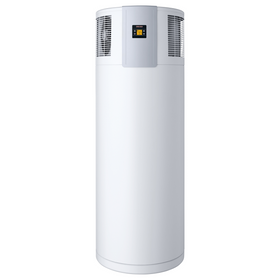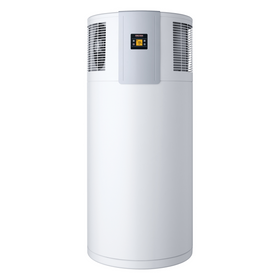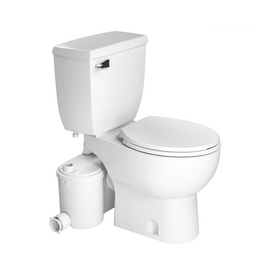
Parcel Delivery Vestibules: A Safe and Convenient Way to Receive Packages
Last Updated: Mar 17, 2025During the recent COVID 19 pandemic, our economy has certainly taken a hit. The number of unemployed people in the United States rose higher during the past three months of COVID-19 than it did in two years of the Great Recession back in the 1930s. Similarly, at least half of small businesses had to close temporarily, and the Washington Post reports that over 100,000 small businesses may have closed permanently due to the economic turmoil.
However, one area of the economy that indeed has not suffered during this crazy year is the e-commerce sector. Amazon, to name the most prominent example, has seen enormous growth in revenue and sales throughout the first half of the year. The $75 billion in revenue generated between January and March shows how much we collectively come to rely on e-commerce and delivery services.
Today, you can order virtually anything online. Trips to the grocery store, an emergency supply of diapers, or a new charger for your phone can all be delivered in 24-48 hours (often less) due to the comforts of e-commerce and delivery services. However, the massive explosion of package delivery to homes and apartments has not come without its own specific challenges. Recently, individual homeowners, apartments, and condominium associations have begun to experiment with parcel delivery vestibules. They contend that these spaces are a safe, reliable, and convenient way to deal with the massive surge of delivery packages we rely on.
Table of Contents
- A Look at the Numbers
- What Is a Parcel Delivery Vestibule?
- Why Are New Home Designs Including Parcel Delivery Vestibules?
- The Smart Home Connection For Safe Package Delivery
- How Can a Parcel Delivery Vestibule Be Incorporated Into My Home?

A Look at the Numbers
Just a generation ago, a visit from the UPS or FedEx driver was probably an anxiously-awaited occasion. When we were expecting a large package or delivery from a friend or a company, many people would prioritize staying at home to receive the package physically.
Today, however, receiving packages is an almost daily occurrence for most people.
Over 112 million Americans have an Amazon Prime subscription, which guarantees free, two-day shipping. These subscribers spend an average of $1,400 each year on online purchases.

Similarly, one recent survey found that over a third of the internet using American adults had purchased groceries online in the previous months. The average American household receives 21 parcels each year, which roughly equals two packages per month. However, people in urban areas, younger households, and homes with at least two working adults, most likely receive many more deliveries than average.
Retail stores and businesses are quickly learning that e-commerce is the future of consumption. Almost all large retailers offer their delivery and parcel service. Amazon owns and operates 30,000 Amazon-branded delivery vehicles and 20,000 branded trailers. At the same time, a typical FedEx contractor can deliver up to 2,500 packages per day.
The procuring, packaging, and shipping of millions of parcels and packages is no small logistical miracle. However, up until now, homeowners, builders, and apartment associations have not kept up to pace with the massive surge in delivery services. Parcel delivery vestibules are one recent home innovation that is quickly gaining enormous popularity.
What Is a Parcel Delivery Vestibule?
Vestibules have long been an essential part of homes built in cold climates. They are an enduring aspect of vernacular architecture. In colder areas, a foyer was built at the front or side door of a home. Also known as a mudroom, this small room usually jutted away from the house's main façade and had two doors. The vestibule offered our agrarian ancestors a space to take off their dirty boots and overalls after a long day of working in the field. The double front doors also protected the home from cold drafts of wind and air when opening and closing exterior doors.
These crucial additions to old homes acted like an extra layer of energy-efficiency before the use of high-efficiency insulation in homes was widespread.
Today, parcel delivery vestibules mainly offer a similar design to the standard cold rooms in older homes. High efficiency and super-sealed doors (check out this Rise guide) essentially make a vestibule unnecessary from an energy-efficiency and thermal performance perspective. However, the double front door concept is a great option for receiving parcels and deliveries safely, effectively, and reliably.
Why Are New Home Designs Including Parcel Delivery Vestibules?
Most of us are not home during the day when the vast majority of parcels are delivered. A well-designed parcel delivery vestibule can allow a safe, sheltered place for the delivery driver to leave your box. Imagine a busy family ordering a couple of gallons of milk, a tub of vanilla ice cream, and some frozen pizzas from their local grocery store. If they had an unexpected errand and had to leave home, the ice cream, milk, and frozen goods probably wouldn't do too well sitting on the sunny front porch.

Parcel theft is another concern that homeowners would do well to consider. According to a 2019 report published by CR Research, 36 percent of those polled believed that they had a package stolen from their porch or mailbox. Over half of people knew someone who had suffered from parcel theft. The average cost to replace the stolen item was $109, meaning that parcel theft might be costing Americans billions of dollars each year.
Regarding cost-effectiveness, the investment in a parcel delivery vestibule could very well pay for itself over its lifetime by avoiding the hassle of stolen parcels. E-commerce is expected only to continue to grow. Even before the current pandemic, e-commerce businesses were expected to see a 265 percent growth rate, growing from $1.3 trillion in sales in 2014 to $4.9 trillion in 2021. Given this trend, parcel delivery vestibules might become an expected addition to new home construction. They will also increase the value of older homes.

The Smart Home Connection For Safe Package Delivery
So how exactly does a parcel delivery vestibule protect your home and your deliveries? In the simplest of designs, the first door into the vestibule is left unlocked for the delivery person to enter and leave the package. The second door that leads into your home remains locked for added protection and privacy. This setup will protect your new laptop or tablet from an unexpected rainstorm that could have ruined the package had it been left on the front porch.
Also, merely having a package delivered inside the vestibule and out of sight could reduce the risk of theft. However, if the vestibule door is unlocked, burglars and curious teenage neighbors can, of course, still have access to your packages.
Smart home technology offers a perfect solution to this dilemma. For example, a homeowner who has installed a smart doorbell and door locking system can be alerted when a FedEx or Amazon delivery driver arrives at your home. With the simple swipe of an app, you can unlock the first door into your vestibule. You can then watch the delivery driver place your package in the designated spot and then lock the door again once he or she leaves. Similarly, if you have a keypad door lock, you can also set a code that you give to package delivery people to unlock the vestibule and drop the package. This code can then be changed at any time for security purposes.
For more information on the best smart home door locks, check out this Rise article on smart door locks.
The Internet of Things has also offered a parcel delivery solution to multi-family apartments, condominiums, and residences in dense urban areas. A 200-unit apartment building in New York City, for example, might receive upwards of 70 packages a day. Building owners and managers are incorporating parcel delivery vestibules, self-serve lockers, and smart lock systems that give safe and strategic access to delivery drivers when the renter or resident isn't at home.
How Can a Parcel Delivery Vestibule Be Incorporated Into My Home?
Parcel delivery vestibules should become a relatively common feature on new homes in the coming decade. However, these simple additions can be part of a renovation project that adds value and functionality to your home without sacrificing your home's aesthetics or energy efficiency.
When considering where and how to add a parcel delivery vestibule onto your home, the first consideration is which doorway you want to modify. Almost all homes have both a front and side entrance. Either of these can be used to add a parcel delivery vestibule. If attached to your home's main front door, a parcel delivery vestibule could be part of a larger front porch or sunroom. If you prefer a more inconspicuous and smaller parcel delivery vestibule, a small, secure closet design might work for you. This smaller room could be accessible from your existing front porch. Other options for placing a parcel delivery vestibule include a small addition onto your garage, or a more substantial, multi-purpose vestibule built onto a secondary, side entrance.
One of the basic principles of permaculture design is that every element should fulfill several functions. A parcel delivery vestibule's primary purpose is to create a safe, reliable, and convenient space to receive your packages and deliveries. However, with a bit of creativity in your design, this vestibule could transform into a beautiful, outdoor living space. If, for example, you have a south-facing side door, a parcel delivery vestibule could double as a small greenhouse/sunroom.
The greenhouse would capture the sun's heat, allow you to grow fruits and vegetables during the winter months, while also increasing the energy efficiency of your home and lowering your monthly heating bills.
Parcel delivery vestibules might be a relatively new concept in home design. As e-commerce continues to grow, it will be interesting to see how creative and sustainably-minded homeowners design unique and innovative places to receive their packages.
Tobias Roberts
Tobias runs an agroecology farm and a natural building collective in the mountains of El Salvador. He specializes in earthen construction methods and uses permaculture design methods to integrate structures into the sustainability of the landscape.










